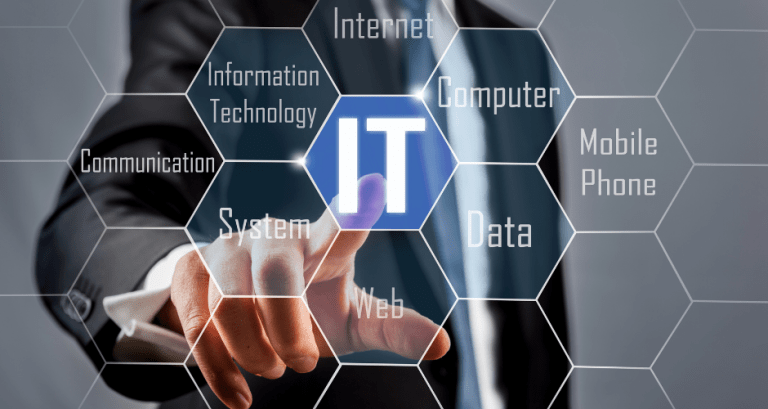Cyberattacks are an ever-increasing threat to businesses everywhere, and early estimates indicate that by 2025, cyberattacks alone will cost the global economy approximately $10 trillion annually.
Needless to say, doing everything you can to prevent cyberattacks is a priority for all companies, large or small, and today we will be exploring some of the most common types of cyberattacks.
What is a Cyberattack?
Before we dive into the different types of cyberattacks, let’s start by defining what a cyberattack is.
A cyberattack is an intentional attempt by an individual or organisation to gain access to a computer, network, system, or device without authorisation, to steal, tamper with, or destroy data, applications, or other assets. These individuals or organisations use various tactics and tools, such as malware, social engineering, and password theft, to carry out these attacks.
Most common types of Cyberattacks.
Although many ways exist to infiltrate systems and networks, most attacks employ similar tactics and techniques to achieve their goal. Preventing cyberattacks requires an approach that is multi-faceted and encompasses a variety of security solutions. Below, we will take a look at some of the more common cyberattack tactics and some strategies employed by companies to prevent some of these attacks:
1) Malware:
Malware can be classified as any form of software that has been installed on a system without authorisation or permission, which then can infect the system in various ways. Some examples of how malware can infect a system are replicating and/or encrypting files, blocking access to data, collecting information, and even displaying ads. Different types of malware include but are not limited to viruses, worms, trojans, ransomware, spyware, adware, keyloggers, and botnets.
Preventative Measures: Anti-malware, spam protection software, and extensive staff training to recognise malicious emails and websites are just some of the measures employed by many companies to help combat malware attacks.
2) Phishing:
Phishing is a manipulative method to trick users into sharing sensitive information or installing malware. Phishing takes on many forms; some of those include:
- Spear Phishing: Targeting individuals or organisations with deceitful emails, in some cases, impersonating high-ranking individuals to steal money or data.
- SMiShing/Vishing: Enticing individuals to share sensitive information through fraudulent text messages and phone calls.
Preventative Measures: To prevent phishing attacks, the best preventative measure is to educate your staff about suspicious emails, links, and messages and provide all-around security awareness training.
3) Man-In-The-Middle Attack (MITM):
In a man-in-the-middle attack (MITM), the attacker will secretly insert themselves into a communication line between two unsuspecting parties. Once inserted, the attacker will be able to potentially eavesdrop on the communications, collect sensitive information, or even manipulate the content of the communication. The widespread adoption of end-to-end encryption in modern email/chat systems has significantly reduced the prevalence of MITM attacks.
Preventative Measures: In the case of MITM attacks, using a VPN is crucial when connecting through public Wi-Fi, being cautious of fake websites, intrusive pop-ups, and invalid certificates.
4) DoS & DDoS Attacks:
A DOS (Denial of Service) and DDoS (Distributed Denial of Service) attack is an attempt to disrupt the functioning of a system or network by sending excessive traffic and overwhelming it. The difference between the two is that a DoS attack is carried out by a single attacker, while a DDoS attack involves multiple attackers collectively launching an attack. The goal of these types of attacks is to disrupt, making a system or network unavailable for legitimate users.
Preventative Measures: Preventing DoS and DDoS attacks requires a multi-layered and robust network infrastructure, including the likes of firewalls, rate limiting, traffic filtering, etc.
5) SQL Injection:
SQL injection refers to a vulnerability in SQL databases that allows an attacker to execute SQL commands using an HTML form on a webpage. If the database permissions are not properly established, the attacker can use the HTML form to execute unauthorised database operations, including generating, reading, editing, or deleting data.
Preventative Measures: These attacks can be prevented by properly sanitising inputs and ensuring that special characters entered by users are not rendered on web pages.
6) Zero-day Exploit:
A zero-day exploit is a cyberattack in which attackers take advantage of a newly discovered vulnerability in widely used software applications or operating systems before a security patch is issued. This enables attackers to target organisations employing that software by exploiting the vulnerability while it remains unpatched.
Preventative Measures: Traditional antivirus solutions may not be effective against zero-day exploits, but Next-Generation Antivirus (NGAV) solutions can offer some protection.
7) Business Email Compromise (BEC):
BEC attacks are a sort of cybercrime in which the attacker targets specific individuals, usually employees with financial authorisation, and deceives them into transferring funds to the attacker. To successfully persuade the victim to release funds, BEC assaults necessitate rigorous planning and investigation, such as acquiring information about the organisation’s executives, workers, customers, business partners, and prospective partners. BEC assaults cause significant financial losses, making them among the most damaging types of cyberattacks.
Preventative Measures: To prevent BEC attacks, employees should be trained to scrutinise emails for fake domains, urgency, and other suspicious elements.
8) Password Attacks:
A password attack occurs when an attacker attempts to predict or discover a user’s password to gain unauthorised access to a device or account. There are numerous methods for cracking passwords, including brute force, dictionary, rainbow table, credential stuffing, password spraying, keylogger, and even phishing techniques that fool people into exposing their credentials.
Preventative Measures: Preventing password attacks involves strong password policies, Multi-Factor Authentication (MFA), and penetration testing.
9) Eavesdropping Attacks:
Eavesdropping attacks, also known as “snooping” or “sniffing,” occur when an attacker seeks out unsecured network interactions to intercept and access data being transferred across the network. To protect against this, firms frequently require employees to use a Virtual Private Network (VPN) when connecting to the company network via public Wi-Fi hotspots, which are insecure.
Preventative Measures: Eavesdropping attacks can be avoided by encrypting sensitive data at rest and in transit, using firewalls, VPNs, and intrusion prevention systems, and educating staff about phishing attempts.
10) IoT-Based Attacks:
IoT-based cyber-attacks use weaknesses in internet-connected devices, such as smart POS, lighting, and security systems, to conduct denial-of-service, malware, and phishing attacks to disrupt vital infrastructure, and company operations, and acquire personal information.
Preventative Measures: To protect against IoT attacks, change the default router settings, use secure and unique passwords, disconnect devices when they are not in use, and keep them up to date with the latest patches.
Conclusion
Cyberattacks keep changing, becoming more sophisticated and frequent. From malware and phishing to zero-day exploits and IoT-based assaults, fraudsters are continuously looking for new ways to exploit system and network vulnerabilities. Understanding the most prevalent types of cyberattacks is the first step for businesses to improve cybersecurity and protect critical data.
Implementing preventative measures such as employee education, strong password policies, multi-factor authentication, and a solid security architecture is crucial for lowering the likelihood of a successful attack. Staying watchful, following up-to-date security policies, and being prepared for any threats are all critical strategies for securing your organisation in the digital age.
As cyberattacks become more common, businesses of all sizes must invest in cybersecurity as a priority. Companies that stay aware and proactive can reduce risks and protect their operations from the ever-present threat of cybercrime.





